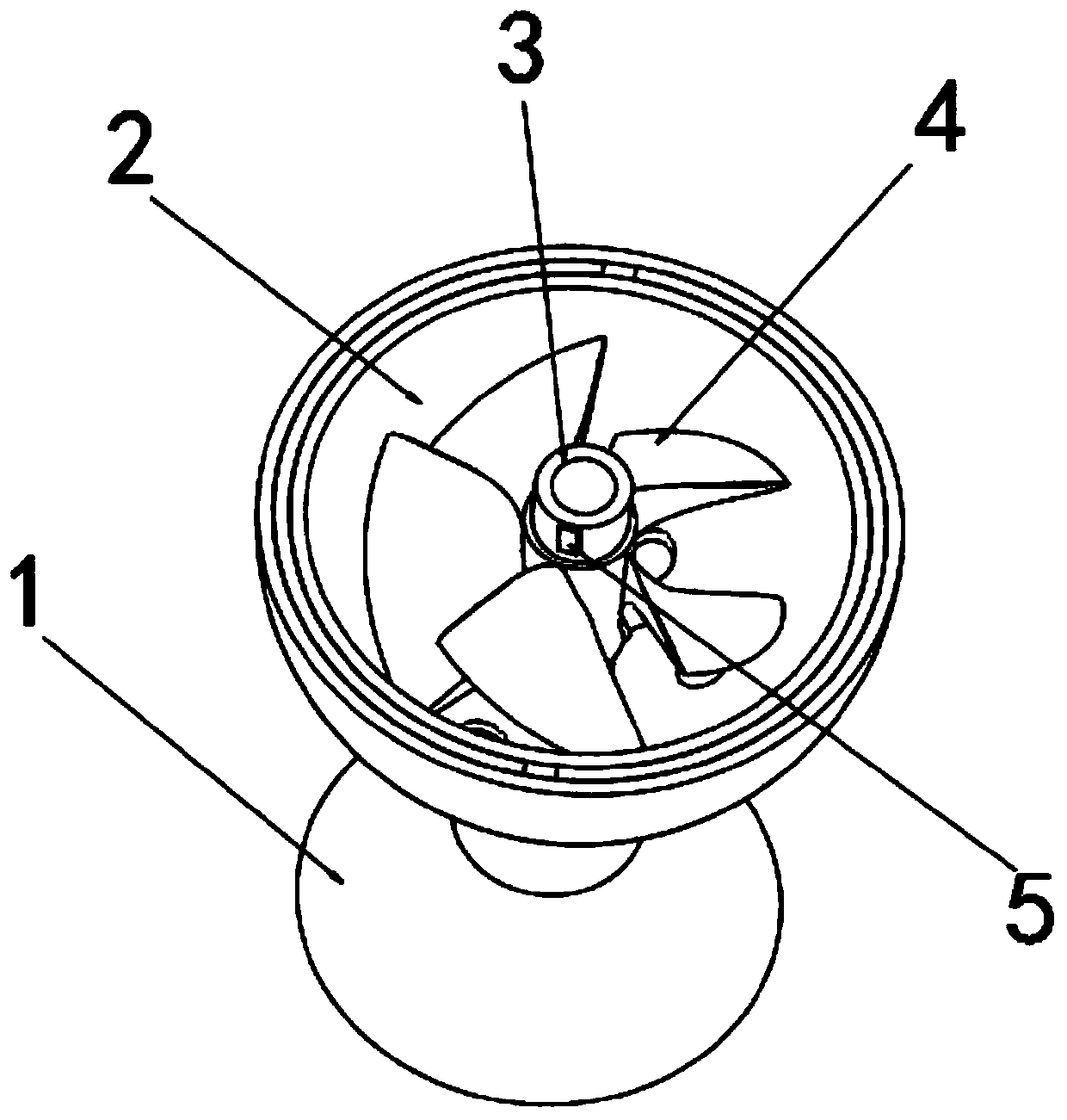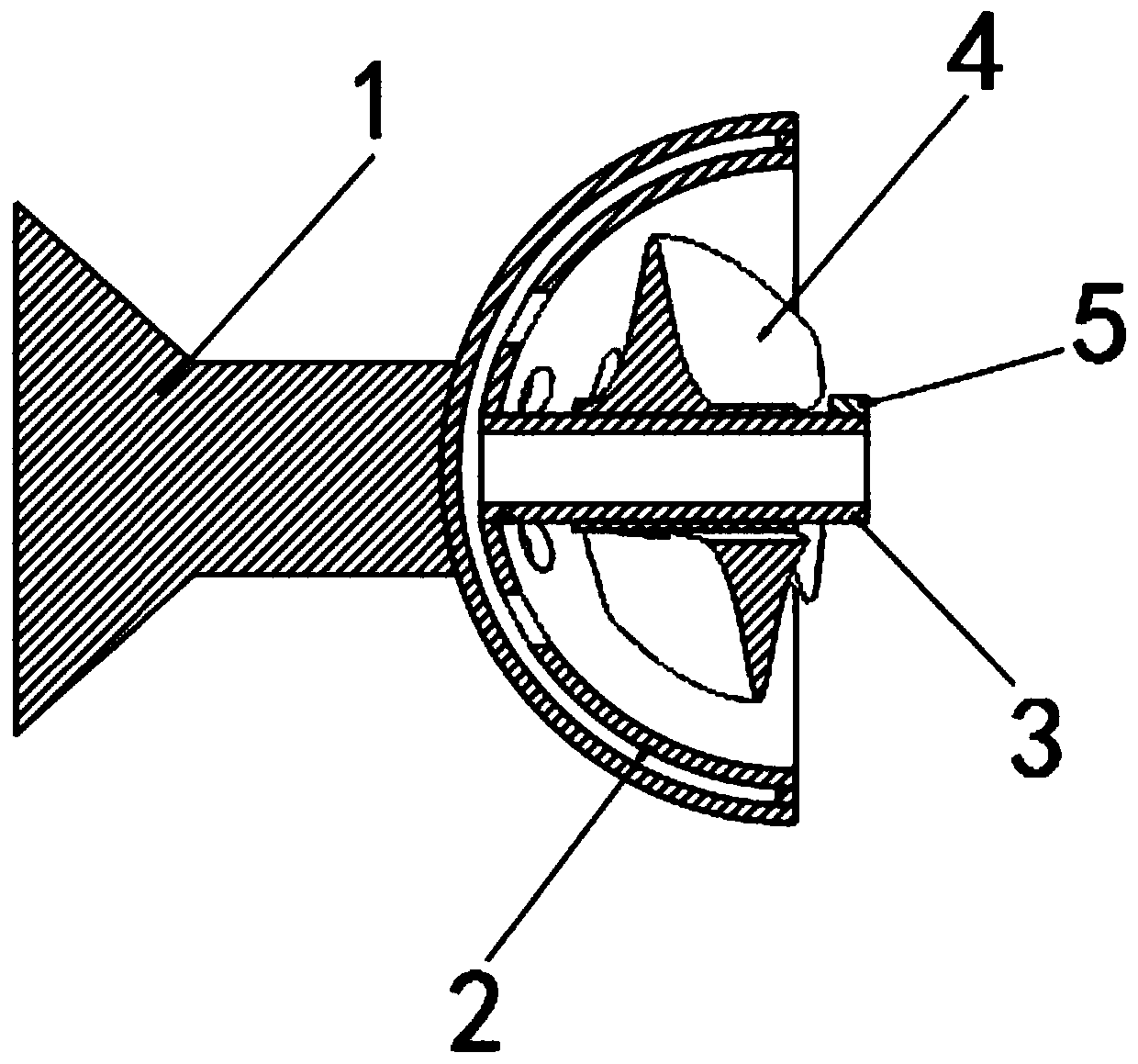Flow control device and method for improving stability of ventilation cavitation bubbles
A flow control and stability technology, applied in the direction of fluid dynamics/hydrostatics characteristics, transportation and packaging, ships, etc., can solve problems such as collapse and interface instability, so as to enhance the ability to resist disturbance and improve stability Effectiveness and practicality
- Summary
- Abstract
- Description
- Claims
- Application Information
AI Technical Summary
Problems solved by technology
Method used
Image
Examples
Embodiment 1
[0046] as attached Figure 1-2 The flow control device shown is used to improve the stability of the ventilated cavitation. Through the cooperation of various components, the gas in the cavitation can be swirled, so as to achieve active control on the shape and stability of the cavitation. It mainly includes interconnected Cavitator 1, air guide bowl 2, ventilation pipeline 3, screw assembly 4, flow controller 5, of which:
[0047] The cavitator 1 is detachably installed on the head of the supercavitating underwater vehicle, which is a conventional cavitator structure, and will not be described in detail here; the present invention makes the cavitator The gas in the bubble is swirled, thereby converting the internal energy of the high-pressure airflow into axial and tangential kinetic energy;
[0048] Air guide bowl 2, if attached Figure 3-4 As shown, it includes a bowl 21 whose end is fixedly connected to the cavitator 1, and the bowl 21 is a double-layer structure with a ...
Embodiment 2
[0056] On the basis of Embodiment 1, the present invention also provides a supercavitating underwater vehicle, which solves the problem of supercavitation shape and underwater vehicle produced during the acceleration process of the traditional underwater vehicle with a fixed structure cavitator. Problems such as mismatched shape, large overall resistance, poor cavitation stability, and poor maneuverability include the main body of the vehicle, the engine, and the flow control device as described in Embodiment 1. The flow control device and the main body of the vehicle are welded, Any one way of screw connection or bonding is fixedly connected, and is arranged coaxially with the tail nozzle of the described engine.
[0057] The supercavitating underwater vehicle described in this embodiment adopts the flow control device described in Embodiment 1, and the ability of the cavitation to resist disturbance can be enhanced by the air flow in the cavitation, and the stability of the c...
Embodiment 3
[0059] On the basis of Embodiment 1, the present invention also provides a flow control method for improving the stability of ventilation cavitation, that is, the use process of the flow control device described in Embodiment 1, including the following steps:
[0060] S1, the flow control device described in Embodiment 1 is fixedly connected to the main body of the navigation body, which can be fixedly connected by welding, threaded connection or bonding;
[0061] S2, during the voyage, if Image 6 As shown, the high-pressure airflow is introduced from the exhaust gas jet of the engine, enters the interlayer 24 through the air inlet 22 along the ventilation pipeline 3 for buffering, and is finally discharged from the exhaust hole 23, under the action of the screw assembly 4 form swirling airflow;
[0062] S3, the high-pressure airflow discharged from the exhaust hole 23 forms an impact on the screw assembly 4 and makes it rotate around the main body of the vehicle;
[0063] ...
PUM
 Login to View More
Login to View More Abstract
Description
Claims
Application Information
 Login to View More
Login to View More - R&D
- Intellectual Property
- Life Sciences
- Materials
- Tech Scout
- Unparalleled Data Quality
- Higher Quality Content
- 60% Fewer Hallucinations
Browse by: Latest US Patents, China's latest patents, Technical Efficacy Thesaurus, Application Domain, Technology Topic, Popular Technical Reports.
© 2025 PatSnap. All rights reserved.Legal|Privacy policy|Modern Slavery Act Transparency Statement|Sitemap|About US| Contact US: help@patsnap.com



